The LEGO® Ferguson Tractor

In the fall of 1951, the LEGO Group launched a small-scale Ferguson tractor made of plastic. The tractor, which is marketed both as a kit and as a finished model, is a huge success. This success is one of the main reasons why sales of the LEGO Group's plastic products surpassed those of their wooden counterparts in 1952.
Red LEGO Ferguson tractor
The Ferguson tractor is sold in two colors, gray and red. © Niels Åge Skovbo, Fokus Photo
Introduction of the Ferguson Tractor
For a five-year period from 1948, Denmark receives monetary and resource aid from the United States under the European recovery program designed to rebuild European economies. The program is the Marshall Plan, named after US Secretary of State George Marshall. Thanks to the financial support, struggling Danish farmers can buy new and better equipment, and in the post-war years, Danish agriculture is being thoroughly modernized. The compact Ferguson tractor is particularly appreciated by Danish farmers, who are quickly exchanging their horses and oxen for the reliable Fergie tractor.

The change is reflected in the Danish toy market. A look at the LEGO Group's many wooden and plastic products from the 1940s, 1950s and 1960s clearly shows that these products were inspired by social change and technological progress. It was therefore a logical step in the early 1950s for the LEGO Group to start the production of a Ferguson tractor in plastic. If Mom and Dad have a Ferguson, their kids playing in the yard will want one too! There is also a range of attachments available for the new toy tractor, including a cultivator and plough, to be attached to the rear of the tractor. These tools not only fit the plastic Ferguson tractor, but also the wooden tractors that were also part of the LEGO® products at the time.
LEGO Ferguson tractor packaging
Two versions of the Ferguson tractor are being made: a finished model and a building set (pictured) that children can assemble themselves
Expensive model
Developing the Ferguson tractor is a difficult task and it takes more than a year to produce the first model. The production costs of the technical drawings and molds required to manufacture the tractor mean that the first LEGO tractor to roll off the production line in 1951 cost DKK 30,000. For comparison, a real 1952 Ferguson tractor costs DKK 9,180. The new product is under pressure to deliver – and at a retail price of DKK 13 per piece, the product must sell well to recoup the LEGO Group's investment. Fortunately, the LEGO Ferguson tractor was a huge and immediate success after its launch in 1951. The tractor, which was on the market until 1959, became one of the most popular LEGO products on the market and was the first major success for the group's LEGO Plastic Molding Division. The department was founded in the late 1940s after Ole Kirk Kristiansen purchased a plastic molding machine in 1946 and began experimenting with plastic.

Drawings of the LEGO Ferguson tractor
Drawing of the LEGO Ferguson tractor, by Knud Møller, the designer who later invented the LEGO wheel
Success breeds success
In 1952, the LEGO Group's plastic products outsold their wooden counterparts. The enormous success of the LEGO Ferguson tractor is a major contributor to the success of the company's plastic products. Approximately 100,000 copies were sold from its launch in 1951 to the fall of 1954. A success like the Ferguson tractor also has implications for other LEGO Group products. One of the items that caught the kids' attention is Automatic Binding Bricks, a precursor to the construction toys the world would later know as... LEGO bricks.
A box of automatic binding stones
Automatic Binding Bricks is launched in 1949
When the Automatic Binding Bricks were launched in 1949, they added little to the company's profits for the first few years. But the picture began to change in the early/mid 1950s, when plastic bricks – renamed from Automatic Binding Bricks to LEGO Mursten in 1953 – became increasingly popular. The rising popularity is partly due to improvements in the quality of the brick. The LEGO Group is plowing back some of the profits from the Ferguson tractor and other popular products to improve product development.

One of the results is better quality brick and the development of new elements. In 1954, the plastic series was expanded with new doors and windows as separate building elements and in 1955 the company introduced the LEGO System in Play. With the introduction of the LEGO System in Play, the product is developed into a toy system, meaning that all elements fit together from this point on, regardless of when they are produced. The system idea is one of the most important milestones in the history of the product that will later be developed into the LEGO brick as we know it today, and one of the keys to the product's success.
a LEGO Ferguson tractor made of clear plastic
The LEGO Group is also producing a limited number of the Ferguson tractor in clear plastic, which is used as a display
ALL LEGO TRACTORS
-
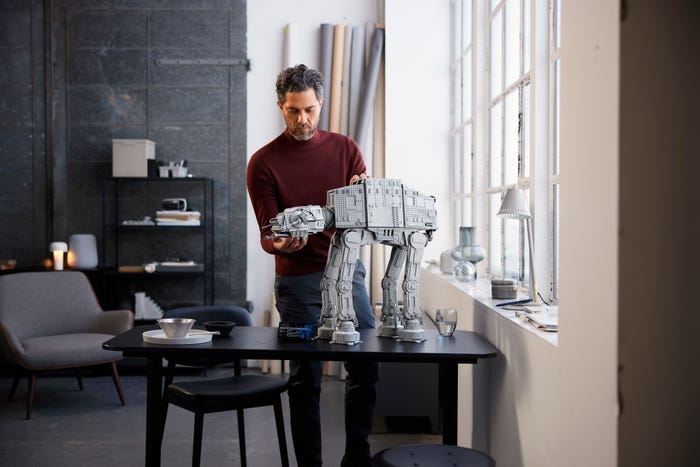
Rare LEGO sets, view them at 2TToys
READ MORE -
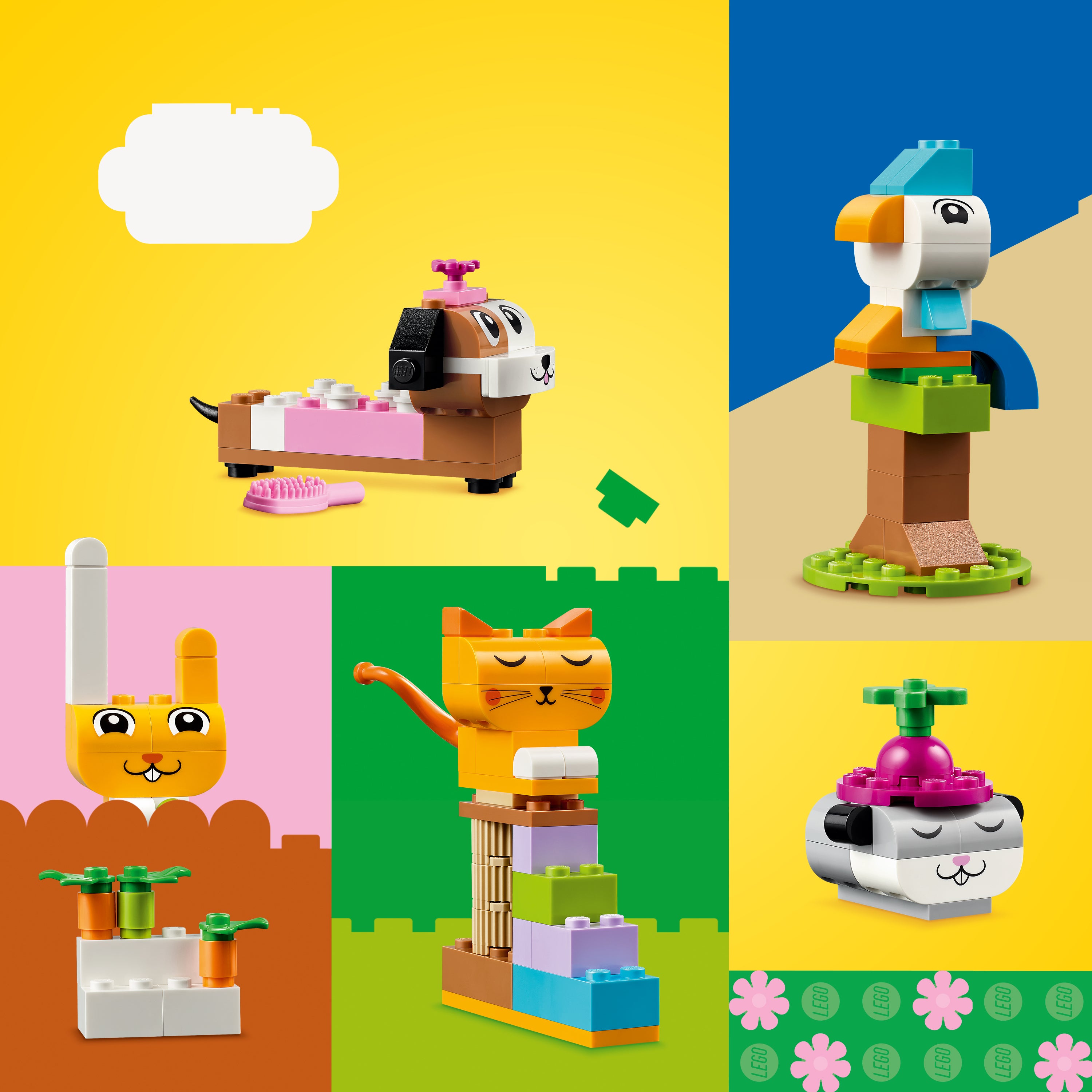
Why LEGO Classic Loose bricks
READ MORE -

LEGO Creator Expert Buildings
READ MORE -
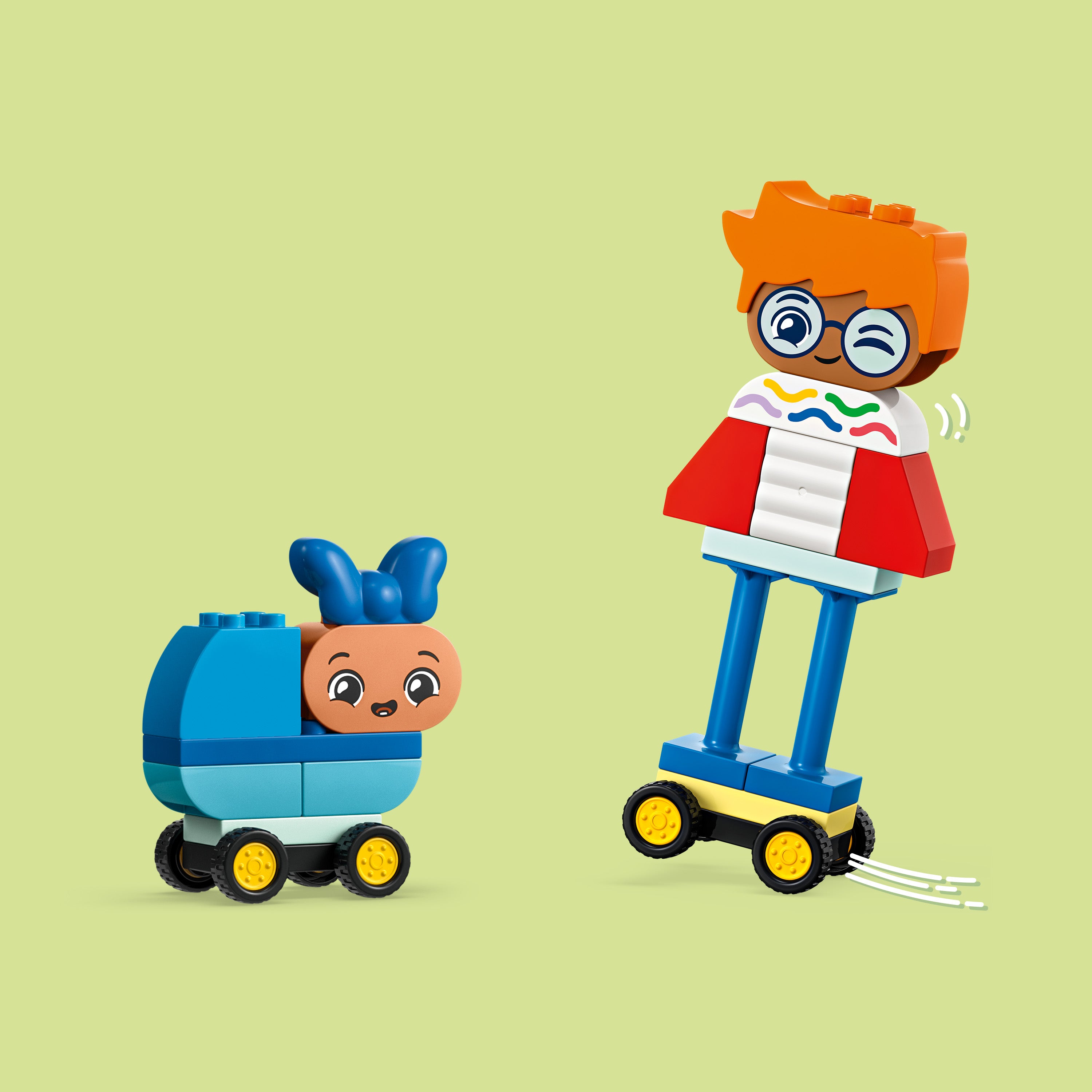
Best educational toys for children aged 2 years and over
READ MORE -

LEGO Cars
READ MORE -
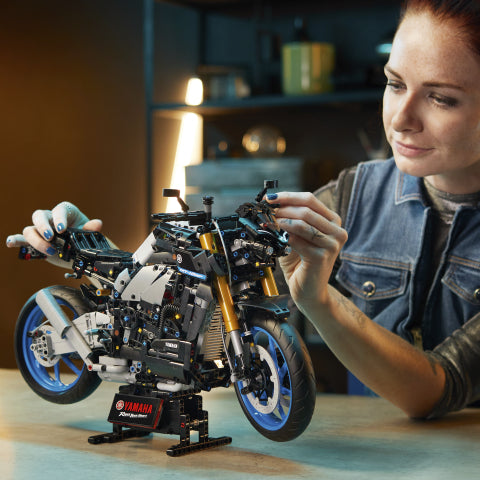
LEGO for adults
READ MORE -

LEGO Harry Potter books
READ MORE -

LEGO Formula 1 sets
READ MORE -
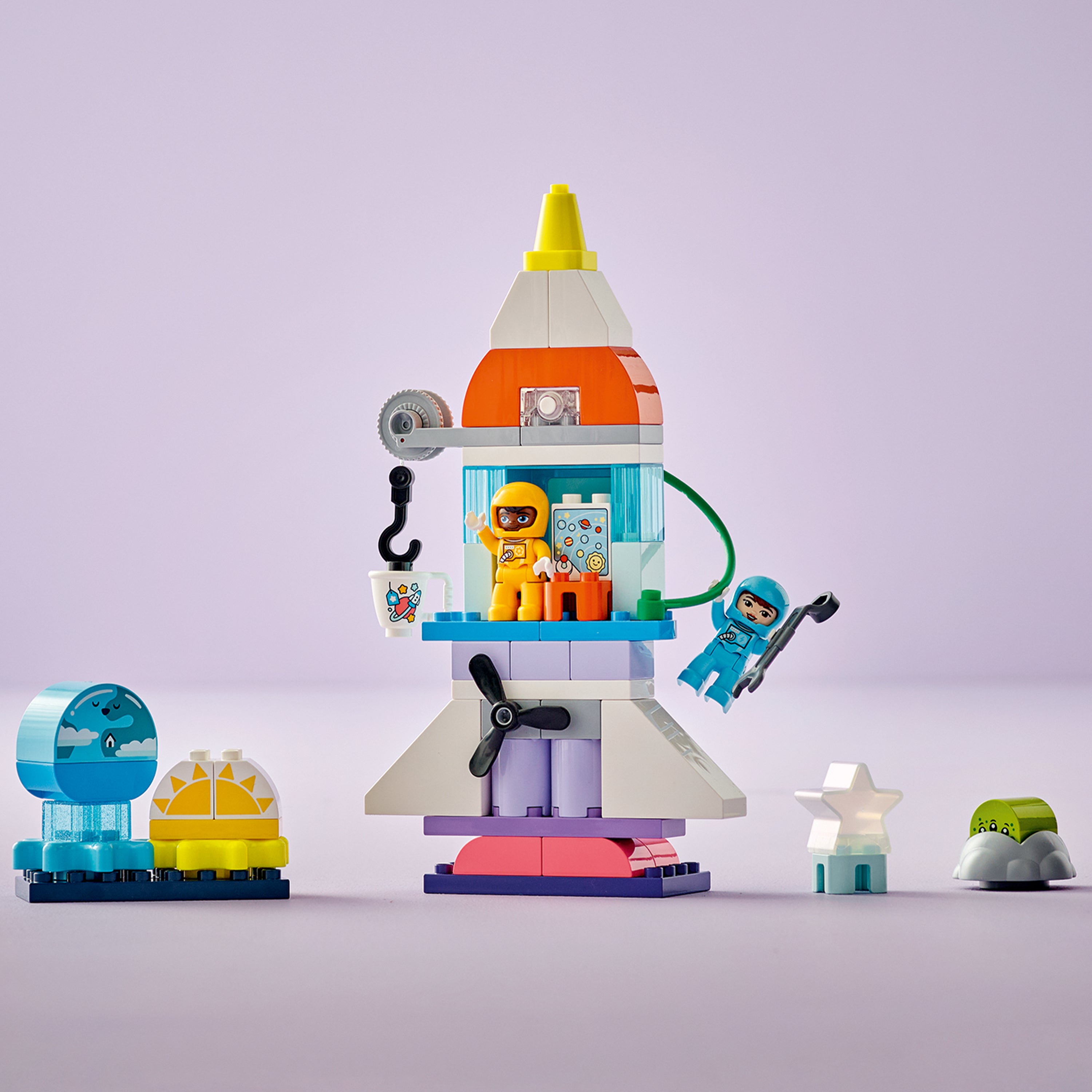
LEGO recall actions
READ MORE
LATEST LEGO SETS
-

 In offerta
In offertaLEGO Mateo's Off-Road Car 71471 Dreamzzz
Prezzo di listino €8,49 EURPrezzo di listinoPrezzo unitario / per€9,99 EURPrezzo scontato €8,49 EURIn offerta -
LEGO Expansion Set: Bowser's Car 71431 Super Mario
Prezzo di listino €25,49 EURPrezzo di listinoPrezzo unitario / per€29,99 EURPrezzo scontato €25,49 EURIn offerta -
LEGO Expansion Set: Yoshi's Peculiar Forest 71428 SuperMario
Prezzo di listino €8,49 EURPrezzo di listinoPrezzo unitario / per€9,99 EURPrezzo scontato €8,49 EURIn offerta -
LEGO Space Base and Rocket Launch Pad 60434 City
Prezzo di listino €147,49 EURPrezzo di listinoPrezzo unitario / per€139,99 EURPrezzo scontato €147,49 EUR -

 In offerta
In offertaLEGO Modular Space Station 60433 City
Prezzo di listino €84,98 EURPrezzo di listinoPrezzo unitario / per€99,99 EURPrezzo scontato €84,98 EURIn offerta -

 In offerta
In offertaLEGO Mining Asteroids in Space 60429 City
Prezzo di listino €16,49 EURPrezzo di listinoPrezzo unitario / per€19,99 EURPrezzo scontato €16,49 EURIn offerta -
LEGO Prison Island Police Station 60419 City
Prezzo di listino €84,49 EURPrezzo di listinoPrezzo unitario / per€0,00 EURPrezzo scontato €84,49 EUR -
LEGO Police Car and Muscle Car Chase 60415 City
Prezzo di listino €16,49 EURPrezzo di listinoPrezzo unitario / per€19,99 EURPrezzo scontato €16,49 EURIn offerta -
LEGO Fire Station with Aerial Ladder Vehicle 60414 City
Prezzo di listino €67,49 EURPrezzo di listinoPrezzo unitario / per€79,99 EURPrezzo scontato €67,49 EURIn offerta -

 In offerta
In offertaLEGO Fire Department Helicopter 60411 City
Prezzo di listino €8,49 EURPrezzo di listinoPrezzo unitario / per€9,99 EURPrezzo scontato €8,49 EURIn offerta -

 In offerta
In offertaLEGO Race Car Transporter 60406 City
Prezzo di listino €24,99 EURPrezzo di listinoPrezzo unitario / per€29,99 EURPrezzo scontato €24,99 EURIn offerta -

 In offerta
In offertaLEGO Rescue Helicopter 60405 City
Prezzo di listino €16,48 EURPrezzo di listinoPrezzo unitario / per€19,99 EURPrezzo scontato €16,48 EURIn offerta -

 In offerta
In offertaLEGO Burger Truck 60404 City
Prezzo di listino €16,49 EURPrezzo di listinoPrezzo unitario / per€19,99 EURPrezzo scontato €16,49 EURIn offerta -

 In offerta
In offertaLEGO Ambulance & Snowboarder 60403 City
Prezzo di listino €16,49 EURPrezzo di listinoPrezzo unitario / per€19,99 EURPrezzo scontato €16,49 EURIn offerta -

 In offerta
In offertaLEGO Steamroller 60401 City
Prezzo di listino €8,49 EURPrezzo di listinoPrezzo unitario / per€9,99 EURPrezzo scontato €8,49 EURIn offerta -

 In offerta
In offertaLEGO Green Race Car 60399 City
Prezzo di listino €8,49 EURPrezzo di listinoPrezzo unitario / per€9,99 EURPrezzo scontato €8,49 EURIn offerta -

 In offerta
In offertaLEGO Princess Market Visit 43246 Disney
Prezzo di listino €84,98 EURPrezzo di listinoPrezzo unitario / per€99,99 EURPrezzo scontato €84,98 EURIn offerta -
LEGO Belle's Belle's Horse Carriage 43233 Disney
Prezzo di listino €13,49 EURPrezzo di listinoPrezzo unitario / per€15,99 EURPrezzo scontato €13,49 EURIn offerta -

 In offerta
In offertaLEGO Horse and pony trailer 42634 Friends
Prezzo di listino €16,48 EURPrezzo di listinoPrezzo unitario / per€19,99 EURPrezzo scontato €16,48 EURIn offerta -

 In offerta
In offertaLEGO Hot Dog Food Truck 42633 Friends
Prezzo di listino €24,99 EURPrezzo di listinoPrezzo unitario / per€29,99 EURPrezzo scontato €24,99 EURIn offerta -

 In offerta
In offertaLEGO Farm Vet 42632 Friends
Prezzo di listino €24,98 EURPrezzo di listinoPrezzo unitario / per€29,99 EURPrezzo scontato €24,98 EURIn offerta -

 In offerta
In offertaLEGO Heartlake City Hospital 42621 Friends
Prezzo di listino €84,49 EURPrezzo di listinoPrezzo unitario / per€99,99 EURPrezzo scontato €84,49 EURIn offerta -

 In offerta
In offertaLEGO Olly and Paisley's Houses 42620 Friends
Prezzo di listino €84,49 EURPrezzo di listinoPrezzo unitario / per€99,99 EURPrezzo scontato €84,49 EURIn offerta -

 In offerta
In offertaLEGO Pop star music bus 42619 Friends
Prezzo di listino €71,99 EURPrezzo di listinoPrezzo unitario / per€84,99 EURPrezzo scontato €71,99 EURIn offerta -

 In offerta
In offertaLEGO Farm Animal Care 42617 Friends
Prezzo di listino €46,48 EURPrezzo di listinoPrezzo unitario / per€54,99 EURPrezzo scontato €46,48 EURIn offerta
SELECTED FOR YOU
-

 In offerta
In offertaLEGO Statue of Liberty 21042 Architecture
Prezzo di listino €84,99 EURPrezzo di listinoPrezzo unitario / per€99,99 EURPrezzo scontato €84,99 EURIn offerta -
LEGO Paris with Eiffel Tower 21044 Architecture
Prezzo di listino €42,49 EURPrezzo di listinoPrezzo unitario / per€49,99 EURPrezzo scontato €42,49 EURIn offerta -
LEGO Trafalgar Square London 21045 Architecture
Prezzo di listino €99,99 EURPrezzo di listinoPrezzo unitario / per -
LEGO The Singapore Skyline 21057 Architecture
Prezzo di listino €49,99 EURPrezzo di listinoPrezzo unitario / per€59,99 EURPrezzo scontato €49,99 EURIn offerta -

 In offerta
In offertaLEGO Pyramid of Giza 21058 Architecture
Prezzo di listino €118,98 EURPrezzo di listinoPrezzo unitario / per€139,99 EURPrezzo scontato €118,98 EURIn offerta -
LEGO Syndney Opera House 10234 Creator Expert
Prezzo di listino €429,99 EURPrezzo di listinoPrezzo unitario / per -
LEGO Tower Bridge from London 10214 Creator Expert
Prezzo di listino €449,99 EURPrezzo di listinoPrezzo unitario / per -
LEGO Taj Mahal India 2017 Version 10256 Creator Expert
Prezzo di listino €449,99 EURPrezzo di listinoPrezzo unitario / per -
LEGO Las Vegas Skyline 21047 Architecture
Prezzo di listino €129,99 EURPrezzo di listinoPrezzo unitario / per -
LEGO Build your own Architecture buildings with this set Studio 21050 Architecture
Prezzo di listino €449,99 EURPrezzo di listinoPrezzo unitario / per -
LEGO The White House 21054 Architecture
Prezzo di listino €109,99 EURPrezzo di listinoPrezzo unitario / per -
LEGO Washington Lincoln Memorial 21022 Architecture (USED)
Prezzo di listino €69,99 EURPrezzo di listinoPrezzo unitario / per -
LEGO The New York Skyline 21028 Architecture (USED)
Prezzo di listino €29,99 EURPrezzo di listinoPrezzo unitario / per€39,99 EURPrezzo scontato €29,99 EURIn offerta -
LEGO The Eiffel Tower from LEGO 21019 Architecture (USED)
Prezzo di listino €49,99 EURPrezzo di listinoPrezzo unitario / per -
LEGO New York Skyline 21028 Architecture
Prezzo di listino €49,99 EURPrezzo di listinoPrezzo unitario / per -
LEGO Paris Postcard 40568 Creator
Prezzo di listino €14,99 EURPrezzo di listinoPrezzo unitario / per -
LEGO The LEGO® House 21037 Architecture
Prezzo di listino €79,99 EURPrezzo di listinoPrezzo unitario / per€0,00 EURPrezzo scontato €79,99 EUR -
LEGO The Flatiron Building 21023 Architecture
Prezzo di listino €119,99 EURPrezzo di listinoPrezzo unitario / per -
LEGO The London Skyline 21034 Architecture
Prezzo di listino €39,99 EURPrezzo di listinoPrezzo unitario / per -
LEGO The Trafalgar Square London 21045 Architecture
Prezzo di listino €99,99 EURPrezzo di listinoPrezzo unitario / per -
LEGO The White House 21054 Architecture
Prezzo di listino €99,99 EURPrezzo di listinoPrezzo unitario / per -
LEGO Paris with Eiffel Tower 21044 Architecture
Prezzo di listino €49,99 EURPrezzo di listinoPrezzo unitario / per -
LEGO The Singapore Skyline 21057 Architecture
Prezzo di listino €50,98 EURPrezzo di listinoPrezzo unitario / per€59,99 EURPrezzo scontato €50,98 EURIn offerta -
LEGO The Burj Khaliffa 21031 Architecture
Prezzo di listino €39,99 EURPrezzo di listinoPrezzo unitario / per -
LEGO London Postcard with Big Ben 40569 Creator
Prezzo di listino €14,99 EURPrezzo di listinoPrezzo unitario / per
-

LEGO DUPLO
Experience endless fun with the LEGO DUPLO sets! Designed for young children...
-

LEGO Sonic The Hedgehog
Fast-paced adventures with Sonic! LEGO Sonic The Hedgehog LEGO Sonic The Hedgehog...
-

LEGO Friends
Experience friendship and adventure with LEGO Friends sets! Explore Heartlake City with...








































































































